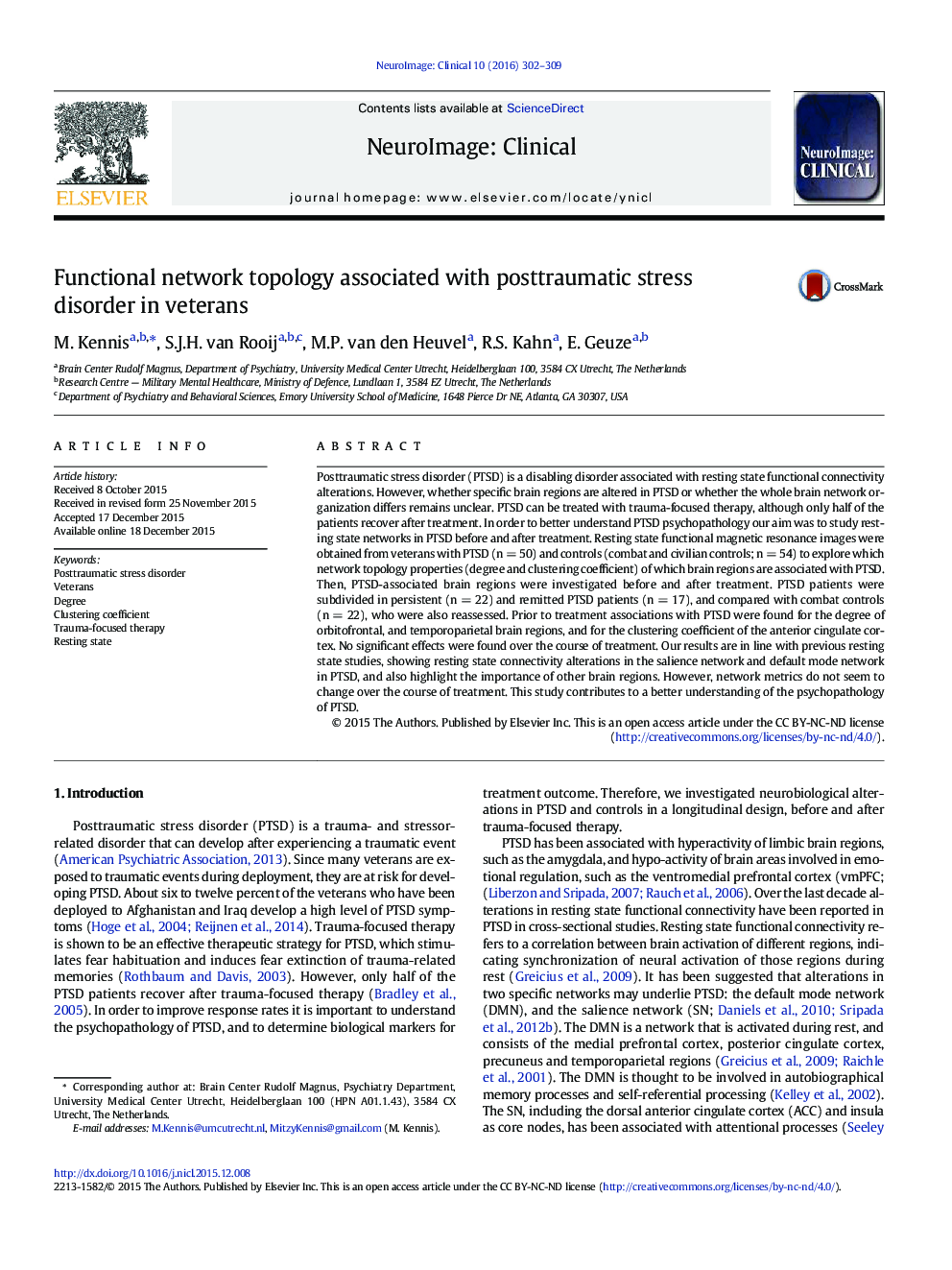| کد مقاله | کد نشریه | سال انتشار | مقاله انگلیسی | نسخه تمام متن |
|---|---|---|---|---|
| 3074878 | 1580957 | 2016 | 8 صفحه PDF | دانلود رایگان |
• PTSD patients were compared with controls before and after trauma-focused therapy.
• Resting state fMRI was investigated with graph network metrics.
• PTSD was associated with network topology alterations in the DMN and SN.
• Trauma-focused therapy did not modulate network topology.
Posttraumatic stress disorder (PTSD) is a disabling disorder associated with resting state functional connectivity alterations. However, whether specific brain regions are altered in PTSD or whether the whole brain network organization differs remains unclear. PTSD can be treated with trauma-focused therapy, although only half of the patients recover after treatment. In order to better understand PTSD psychopathology our aim was to study resting state networks in PTSD before and after treatment. Resting state functional magnetic resonance images were obtained from veterans with PTSD (n = 50) and controls (combat and civilian controls; n = 54) to explore which network topology properties (degree and clustering coefficient) of which brain regions are associated with PTSD. Then, PTSD-associated brain regions were investigated before and after treatment. PTSD patients were subdivided in persistent (n = 22) and remitted PTSD patients (n = 17), and compared with combat controls (n = 22), who were also reassessed. Prior to treatment associations with PTSD were found for the degree of orbitofrontal, and temporoparietal brain regions, and for the clustering coefficient of the anterior cingulate cortex. No significant effects were found over the course of treatment. Our results are in line with previous resting state studies, showing resting state connectivity alterations in the salience network and default mode network in PTSD, and also highlight the importance of other brain regions. However, network metrics do not seem to change over the course of treatment. This study contributes to a better understanding of the psychopathology of PTSD.
Journal: NeuroImage: Clinical - Volume 10, 2016, Pages 302–309
